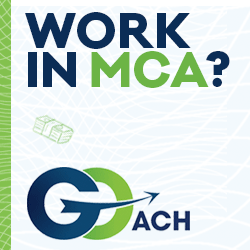Results 1 to 1 of 1
-
11-01-2023, 10:20 AM #1
Cost Segregation for real estate owners
We have a team of qualified associates who can handle this type of study:
What is a cost segregation study?
A cost segregation study allows property owners to maximize the depreciation of their real estate assets by frontloading depreciation deductions for specific classified assets. A cost segregation study segregates a building’s assets into specific classifications and depreciation periods for income tax purposes.
As a result of examining different components of the property, certain assets can have tax lives of 5, 7, or 15 years, much shorter than the 27.5 years for residential properties and 39 years for nonresidential properties. Thorough and accurate cost segregation studies can accelerate the timing of depreciation and significantly reduce the current tax burden of a taxpayer’s real estate properties.
How is a cost segregation study performed?
Most cost segregation studies involve four steps that can increase cash flow during the early years of owning real estate. These include:
1. Feasibility analysis
The first step of a cost segregation study involves understanding the taxpayer’s current tax position and the characteristics of the property that can potentially lead to tax savings. A feasibility analysis is conducted to gauge if a cost segregation study might be beneficial. A feasibility analysis is a complimentary estimate of the costs and benefits of conducting a cost segregation study.
A company can conduct a feasibility analysis that will identify significant property characteristics and offer a reliable estimate of the potential benefits of performing a cost segregation study with regard to a taxpayer’s or business’s tax position. It may not be as beneficial to claim accelerated tax deductions in years of net losses.
2. Collect property information
The next step is to gather all relevant information about the properties owned or being acquired. This information will help determine which real estate assets may qualify for additional depreciation deductions, which may be immediately expensed, and which cannot.
For buildings purchased by the taxpayer, it may be necessary to gather the following information:
Property condition report
Appraisal
American Land Title Association (ALTA) site map or survey
Any closing purchase documents for studies conducted on the property acquisition
Determine an allocation for the land and building
For buildings constructed or remodeled by the taxpayer, it may be necessary to gather the following information:
Total project costs
Vendor invoices
Construction drawings or models
Costs for general contract
Change order details
3. Analyze the property
The next step is analyzing the property to gather additional information. A property analysis typically includes:
An appraisal of the property, either in-person or virtually, to acquire images and a site map
Examination of construction drawings and other relevant documentation
Classification of all estimates and cost information, including any personal property within the building and improvements made to the land around the property site
4. A complete report
Completing a full report is the final step in a cost segregation study. In this report, plan to include the following:
Study results
Methodology used
Property photos
Relevant tax law supporting the classification of your assets
List of assets (buildings) and a breakout of their value by depreciation class
This report must be retained for the duration the property is owned and should support the new asset classifications. The IRS may require the information in the report to be provided as evidence in an audit.
What are the tax benefits of a cost segregation study?
Most taxpayers will benefit from classifying components of a property into shorter-life assets identified by a cost segregation study. However, study results will yield different benefits based on the taxpayer’s property type, the amount of short-life assets it contains, and the depreciable basis of improvements made by the taxpayer.
Depending on the property type, the reclassification of real estate assets to a shorter life property typically ranges from 10%-40% of the depreciable cost basis. For instance, multifamily properties and office buildings tend to have more short-life property than industrial buildings.
Additional savings opportunities
The information obtained from a cost segregation study can often reveal other cost savings opportunities—specifically, prior improvements that have been made can potentially increase deductions.
A common additional savings opportunity pertains to energy efficiency. For taxpayers who constructed or modeled a property, conducting a Section 179D Energy Efficiency Commercial Building Deduction study and a cost segregation analysis may yield additional tax savings if sustainable design improvements were made.
The deduction amount will depend on the specific improvements and the square footage involved. The savings from a Section 179D study can be as high as $1.80 per square foot if the property’s HVAC, building envelope, and lighting systems all meet established efficiency standards.
Builders, developers, and contractors who construct energy-efficient dwelling units may also benefit from a Section 45L tax credit. Connect with Windes for more information on additional savings opportunities.
What are the potential drawbacks of a cost segregation study?
When the taxpayer sells a real estate asset with additional depreciation benefits claimed through a cost segregation study, the asset may be subject to depreciation recapture at the taxpayer’s ordinary income rate rather than at the capital gains tax rate.
Recapture generally becomes less of a concern as the taxpayer continues to hold the asset. When the taxpayer owns the real estate asset for longer than 3-5 years, the cost segregation benefits often outweigh the extra taxes due to recapture.
The taxpayer’s cost segregation study should include references and documentation that substantiate the tax positions of the study. The IRS may disagree with the tax position, and without extensive support, the taxpayer could be subject to penalties.
How to navigate challenges
As with other tax records, cost segregation studies are subject to review by the IRS, so it is critical to have proper documentation. It is generally best to work with a cost segregation tax expert who:
Understands and adheres to all IRS guidelines while aiming to increase your tax savings
Provides you with a thorough cost segregation report that supports your tax position
Helps resolve issues with the IRS in the case of an audit
What makes a real estate investment a good cost segregation study candidate?
Any real estate owner facing tax liabilities generally benefits from a comprehensive cost segregation study. Ideal candidates are corporations, partnerships, trusts, and individuals with:
Newly purchased or constructed property worth a basis allocated to the building of more than $1 million
Renovation, remodel, or leasehold improvements greater than $300,000
When is the ideal time to have a cost segregation study performed?
Benefits from cost segregation studies can be claimed when a taxpayer has constructed a new building and is holding the property as a rental or if they have purchased an existing property, even if the purchase of the existing property was in a prior year.
Construction projects
It is beneficial to begin a cost segregation study during the construction process. Construction information and cost details are easily obtained for inclusion in the report. Before completing the cost segregation study, the taxpayer will need to know the final construction costs.
Purchased properties
A cost segregation study should be completed on a purchased property before the taxpayer files their tax return for the year the property was acquired.
Look-back studies
A cost segregation study can perform a look-back on the assets placed into service in a previous tax year. For look-back studies, a CPA must prepare Form 3115 to claim the catch-up of allowable depreciation.
How long does a cost segregation study take?
A cost segregation study generally takes four to eight weeks, from the time you start collecting relevant information to the time you review your tax position.
Can a cost segregation study be done without a tax professional?
A taxpayer may be able to identify some of the basic short-life assets of their property without a tax professional; however, to get the full benefit from a cost segregation study, it is always best to work with a tax professional who specializes in this field.
In its Cost Segregation Audit Guide, the IRS outlines different approaches to cost segregation, and the techniques that it believes are the most reliable.
“Rule of thumb” method
This method involves estimating a building’s short-life property by looking at how the property compares to other short-life properties found in similar buildings. There may be little to no documentation, and the IRS does not consider this method to be reliable. If using this approach, it is advisable to work with a tax professional with extensive experience with this method.
Engineering approach
A cost segregation expert will generally employ a detailed engineering approach that uses actual cost records to provide the IRS with the most accurate results. The engineering approach is a lower-risk method, as the IRS trusts results yielded by this approach more than those discovered using the rule of thumb method.Steve Benjamin
Professional Business Loans
522 Contessa
Irvine, CA 92620
steveprobiz@gmail.com
https://probizloans.net/
Broker, Underwriter, general business loan expert
949.228.1050
@ 24 hour funding working capital loans
@ Term loans from 3 years to 10 years at 9.5% and up
@ Equipment financing up to 7 years
@ Property loans - Hard Money and traditional - Primary, Investment, commercial, land, fix and flip, construction.
@ SBA loans - 7A and 504.
@ Private money equity and debt for major investments
@ Personal Loans up to gross income from personal tax return.
Similar Threads
-
Commercial real estate owners who took out MCAs
By MaxAEP in forum All Other LendingReplies: 0Last Post: 06-02-2022, 05:56 PM -
Real Estate!
By PatrickC in forum All Other LendingReplies: 0Last Post: 09-30-2019, 03:57 PM -
real estate
By TMR in forum Deal BinReplies: 5Last Post: 08-09-2016, 02:16 PM -
Real Estate
By csichoice in forum Deal BinReplies: 8Last Post: 05-05-2016, 08:13 AM -
Real Estate guy in need of ~20k
By Michael Jagiello BGF in forum Deal BinReplies: 4Last Post: 03-30-2016, 05:56 PM





 Reply With Quote
Reply With Quote















